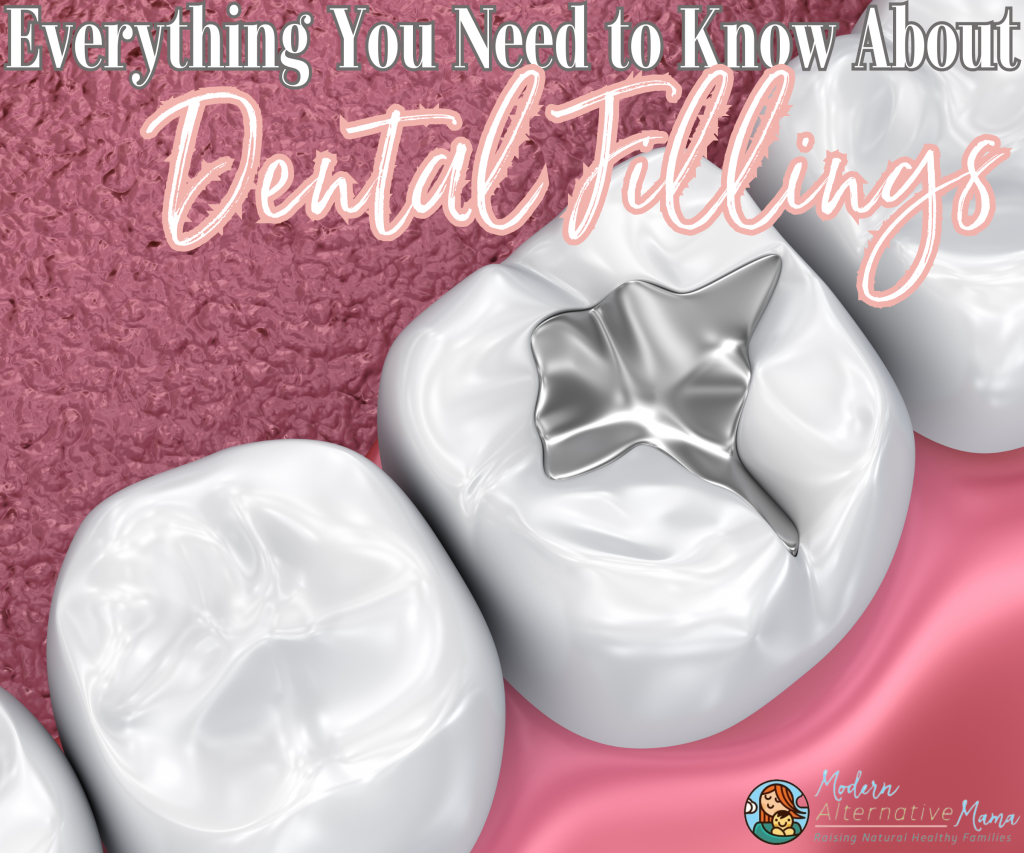Navigating Your Child’s Dental Health: What Every Parent Needs to Know About Fillings
As a mom, hearing that your child might need a dental filling can feel overwhelming. You’re suddenly flooded with questions and concerns: What are my options? How can I prepare my child? What should I expect from the dentist? Should I be worried about the long-term effects of the filling?
I’ve been where you are—trying to navigate the world of dental care, wondering what’s best for my child’s teeth, and feeling unsure about the whole process. It’s no easy task, especially when it feels like there are so many different types of fillings, procedures, and aftercare instructions to consider. Both my kids struggled with enamel issues and cavities which has led me to years of research, working through some guilt and allowing myself to let go of that guilt and focus on the things I was able to control.
The good news is you don’t have to do this alone. By understanding how cavities form, when remineralization is possible, and how to choose the best dentist and treatment options, you can feel more confident moving forward. Let’s break it down together, step by step.
What Should I Do When I Find Out My Child Needs a Filling?
First, take a deep breath and don’t panic. Cavities are very common, and fillings are one of the most routine dental procedures. When I say common- I would like to note that common and normal are not the same thing. So many factors are at play. You’ll want to consider all your options before deciding on a treatment plan.
Can a Cavity Be Remineralized?
Many parents don’t realize that it’s possible to reverse early-stage tooth decay naturally. In fact, tooth remineralization can prevent the need for a filling in some cases. Here’s how it works:
- Early-Stage Cavities: If your child’s cavity is in the early stages and hasn’t yet reached the soft tissue beneath the enamel (called the dentin), remineralization might be a viable option. Enamel is capable of rebuilding itself when given the right nutrients like calcium, magnesium, and phosphate.
- Diet: Encourage a nutrient-dense diet full of foods that support dental health. Think calcium-rich dairy (if tolerated), leafy greens, and healthy fats like omega-3s. For more information on diet relating to this subject check out our other blog on Dental Diet.
- Important Nutrients: To help remineralize teeth, focus on foods high in calcium (like broccoli, raw, grass-fed milk, or leafy greens), magnesium (such as avocados, squash seeds, and cacao), vitamin D (found in egg yolks and fatty fish), and vitamin K2 (which can be found in foods like egg yolks, chicken liver, and fermented foods). Herbal teas can also be beneficial, like clove tea or stinging nettle tea.
- Advanced Cavities: Once a cavity has reached the dentin, remineralization is no longer an option, and a filling is necessary. Decay that reaches the dentin is irreversible and needs to be removed to prevent further damage.
The key takeaway here is to catch cavities early! Routine dental visits, proper nutrition, along with proper oral care at home, can make a huge difference in stopping or even reversing early decay.
Current Research on Hydroxyapatite Toothpaste Efficacy and Safety
An exciting new option in the world of cavity prevention and remineralization is hydroxyapatite toothpaste. Hydroxyapatite is a natural mineral form of calcium, similar to the enamel in your child’s teeth. Recent studies show that hydroxyapatite toothpaste is not only effective at remineralizing enamel but is also a safe, fluoride-free alternative for many people.
Dr. Mark Burhenne, an expert in natural dentistry who has been practicing for 40+ years, has compiled an extensive list of studies that support the safety and efficacy of hydroxyapatite in preventing cavities and repairing early-stage tooth decay. Research indicates that hydroxyapatite toothpaste can reduce cavries and remineralize enamel without the use of fluoride.
Here are some key findings:
- Effectiveness in Caries Prevention: A systematic review of over 291 studies concluded that micro-hydroxyapatite can significantly reduce caries in the absence of fluoride. While more research is needed to determine the exact concentration required, studies suggest that toothpaste with 10-15% micro-hydroxyapatite is effective for preventing and reversing early tooth decay.
- Remineralization Potential: Research also indicates that hydroxyapatite toothpaste can aid in the remineralization of initial enamel lesions. One study found that nano-hydroxyapatite toothpaste was as effective as fluoride toothpaste in remineralizing early caries’ lesions. This makes hydroxyapatite a promising alternative for parents looking for fluoride-free options.
- Dentin Sensitivity: Hydroxyapatite toothpaste has also been shown to reduce dentin hypersensitivity. In a randomized controlled trial, nano-hydroxyapatite toothpaste outperformed fluoride toothpaste and a placebo in alleviating sensitivity, providing long-term relief for kids suffering from tooth sensitivity.
- Safety Profile: Hydroxyapatite is a biomimetic material, meaning it closely resembles the natural minerals in teeth and bones. Studies have found that hydroxyapatite is not only effective but also safe for daily use, with no harmful side effects.
Incorporating hydroxyapatite toothpaste into your child’s dental care routine could be a great option to support enamel remineralization and prevent cavities naturally. If you’re interested in this fluoride-free alternative, I highly recommend checking out Dr. Burhenne’s extensive research on the subject on his website, Ask The Dentist.
What Causes Cavities in Kids?
Tooth decay in children can happen to even the healthiest mouths, especially if certain conditions line up. Understanding the root causes of cavities can help prevent them in the first place.
Cavities form when the bacteria in the mouth feed on sugars and produce acid that erodes the enamel. Here’s how this works:
- Sugary Foods and Drinks: Sugary foods, processed carbs, and drinks like fruit juice provide the fuel that harmful bacteria need to thrive. These bacteria form plaque that sticks to the teeth and, over time, produces acids that wear down enamel, causing cavities.
- Poor Oral Hygiene: If your child’s teeth aren’t brushed and flossed properly, plaque can build up, leading to tooth decay.
- Prolonged Sugar Exposure: Letting kids sip sugary drinks from a bottle or sippy cup throughout the day or putting them to bed with a bottle can increase their risk of developing cavities, especially in young children.
- Mouth breathing: This may seem surprising and even cute and innocent when you see your little one sleeping with their mouth wide open, but it is truly a problem that you will want to focus on correcting. It causes the mouth to dry out and without saliva and good bacteria on the teeth this can start forming cavities.
The key to preventing cavities is to limit sugary snacks, help your child establish good oral hygiene habits, and schedule regular dental checkups. But hey, truth is, you can know all these things and somehow still end up with a child with dental issues. It’s typically a combination of these things together and even genetics. Some research suggests that a child’s dental health is greatly determined by the mother’s nutrition during pregnancy.
What Should I Look for in a Dentist?
When you’re facing a potential filling, it’s essential to find a dentist who’s not only skilled but also compassionate and patient with your child. Here are some qualities to look for:
- Pediatric Focus: A pediatric dentist specializes in working with kids, understanding their needs and fears, and knowing how to make the experience as comfortable as possible.
- Communication Style: Look for a dentist who explains the procedure clearly and answers your questions in a way you and your child can understand. They should be calm, reassuring, and capable of putting your child at ease.
- Experience: You want a dentist who has experience working with kids, especially when it comes to fillings. They should be familiar with the latest techniques and materials to ensure the best possible outcome for your child.
- Opt for a functional dentist if possible: A functional dentist uses biocompatible materials that are safe for the body and offer a more holistic approach. Click here to find one in your area.
What Are the Different Types of Fillings?
Once you and your dentist decide a filling is necessary, you’ll need to choose the best type. There are several options available, each with its own pros and cons:
- Amalgam Fillings (Silver Fillings): These are durable and cost-effective but contain mercury, which makes some parents hesitant to choose this option. They’re usually used for back teeth, where the filling won’t be as visible.
- Composite Resin Fillings (White Fillings): These are tooth-colored fillings that blend well with your child’s natural teeth. They’re ideal for cavities in the front teeth or smaller cavities in the back. However, they may not last as long as amalgam fillings and can wear down more quickly.
- Porcelain Fillings: These are durable and aesthetic, but they come at a higher cost and may require multiple visits.
- Gold Fillings: Gold is one of the most durable materials, but it is expensive and more noticeable than other options.
Your choice will depend on factors like your budget, the location of the cavity, and the aesthetic concerns you have for your child’s smile.
You can also ask your dentist about Silver diamine fluoride – Silver diamine fluoride (SDF) is a liquid treatment made from silver, fluoride, and ammonia that helps stop cavities from getting worse. It works by hardening the tooth, killing bacteria, and preventing further decay. While it’s effective and painless, it can turn the decayed area black. Unlike regular fluoride, SDF also has antibacterial properties, making it a good choice for treating existing cavities. Ask your dentist if this treatment is an option for the cavity your child has and you may be able to avoid the process of capping. It basically buys the teeth more time, but it is possible other intervention will still be needed eventually. The process of getting this on the teeth is very quick and gentle, they literally “paint” it on the teeth with a little paint brush.
What Can I Expect During the Filling Procedure?
If a filling is required, you may be wondering what the procedure will be like. Here’s what typically happens:
- Numbing the Area: A local anesthetic is used to numb the area around the cavity. Your child may feel a tiny pinch as the injection is given, but the procedure itself should be painless.
- Removing the Decay: Once the area is numb, the dentist will remove the decayed portion of the tooth. They’ll use a small drill or laser, and while the sound may be a little intimidating, it won’t hurt.
- Placing the Filling: After cleaning out the decayed area, the dentist will fill the cavity with the chosen material (composite, porcelain, etc.). If necessary, the filling may be placed in layers, with each layer hardened using a special light.
- Post-Procedure Care: Once the filling is placed, the dentist will polish it and check your child’s bite to ensure everything feels right. You can expect a bit of sensitivity right after the procedure, especially to hot and cold foods, but this should subside in a few days.
How Can I Prepare My Child Mentally and Physically?
Preparing your child for a filling is key to minimizing anxiety and ensuring the procedure goes smoothly. Here are a few ways to prepare:
- Explain the Procedure: Keep things simple and tell your child that the dentist will help fix the “ouch” in their tooth so they feel better. Avoid using words that might sound scary, like “drill” or “pain.”
- Bring Comfort Items: Let your child bring a favorite toy or blanket to the appointment to provide some comfort.
- Positive Reinforcement: Praise your child for being brave, and offer a reward after the appointment to help them associate dental visits with positive experiences.
Other information you may find valuable on this subject
Mewing – Have you ever heard of “mewing“? It’s this technique where you consciously position your tongue against the roof of your mouth to improve your jawline and facial structure. Some people believe it helps with things like better posture, improved breathing, and even can prevent or correct certain dental issues like overbite and cavities. It’s kind of like retraining how you hold your mouth, and while there’s not a ton of scientific evidence yet, some people swear it makes a difference for their facial appearance and overall dental health. So, if your kids or even you are working on habits like better posture or mouth breathing, mewing might be something to try out!
Goldenseal Tincture or tea – (not considered safe while pregnant and breastfeeding) Goldenseal is a natural herb that’s often used for its antimicrobial properties, which can be beneficial for dental health. It’s sometimes used in mouth rinses or pastes to help fight bacteria and reduce inflammation in the gums. It may also help with conditions like gum disease or mouth infections, though it’s typically used as a supplement to regular oral care, not a replacement.
Saliva / hydration – You know how we always remind the kids to drink water, right? Well, it’s not just for keeping them hydrated—it’s also super important for their teeth! Saliva is like the mouth’s natural cleanser, helping to wash away food particles and neutralize acids that can cause cavities. If they’re not drinking enough water, they might not have enough saliva, which can lead to dry mouth and increase the risk of tooth decay and gum problems. So, keeping them hydrated is key for healthy teeth, just like it’s good for their overall health!
Oil pulling – This is an ancient practice where you swish a tablespoon of oil (like coconut or sesame) in your mouth for 10-20 minutes to help improve oral health. It’s believed to reduce bacteria, plaque, and gum inflammation, promoting healthier teeth and gums. While it’s not a substitute for brushing and flossing, many people use oil pulling as a supplementary practice for fresh breath and overall oral hygiene.
Onlay instead of crowns? (info from @restoration.dentistry) – An onlay is a dental restoration that covers just the damaged part of a tooth, unlike a crown which covers the whole tooth. It’s a good option when a tooth is too damaged for a filling but doesn’t need a full crown. Onlays are usually made from porcelain or gold and are custom fit to your tooth. They’re less invasive than crowns, preserve more of your natural tooth, and blend well with your smile. These may not be available at all dentist offices.
Minerals – You know how we always remind our kids to brush their teeth and eat healthy foods, right? Well, there’s something else that’s just as important for keeping those pearly whites strong and healthy—minerals! Minerals like calcium, phosphorus, and magnesium play a huge role in dental health because they help build strong teeth and bones.
- Calcium is like the foundation for teeth—without it, teeth can become weak and more prone to cavities.
- Phosphorus works alongside calcium to help keep enamel (that shiny, protective outer layer of the tooth) strong and intact.
- Magnesium also helps with tooth mineralization, which means it helps your teeth stay tough and resistant to damage.
If your kids aren’t getting enough of these minerals, their teeth might not develop properly, and they could even face tooth decay or gum problems down the road. That’s why it’s so important to make sure they get a balanced diet with mineral-rich foods, like dairy, leafy greens, and nuts. So, when we think about dental care, it’s not just about brushing and flossing, but also about making sure our kids’ bodies get the minerals they need to support strong, healthy teeth for life!
Cell salts (homeopathic) – Cell Salts to Reverse Tooth Decay – Emily Frye Homeopathy – Homeopathic cell salts, also known as tissue salts or biochemic salts, are 12 mineral salts used in homeopathy to support overall health and treat various conditions. Developed by Dr. Wilhelm Schüßler in the 19th century, these salts are believed to be essential for proper cell and tissue function. The 12 primary salts include:
- Calcarea Fluorica for skin and bone health
- Calcarea Phosphorica for bone repair
- Calcarea Sulphurica for detoxification
- Ferrum Phosphoricum for inflammation
- Kali Phosphoricum for stress relief
These remedies are typically used in low-potency dilutions to help restore balance in the body, promote healing, and support specific bodily functions like digestion, detoxification, and emotional well-being.
Solea Laser treatment – Solea is a true breakthrough in dental laser technology that offers a completely different experience for both dentists and patients when compared to traditional instruments or any earlier laser treatment. Solea enables increased new patient flow, better clinical outcomes, significant efficiency gains, and new procedures.
Detoxing / Healing after a filling procedure – You know, after getting a filling, some parents like to help their kids detox a bit, just to clear out any possible toxins from the materials, especially if it’s an amalgam filling. It can also help support their immune system and ease any inflammation from the procedure. It’s kind of like giving their body a little boost to recover. Earthley makes quite a few products that can help with this. And this article called 7 Ways to Detox Your Mouth: a Holistic Dentistry Approach has some really great information also.
Final Thoughts
As a parent, it’s normal to feel anxious about your child needing a dental filling. The process honestly may be harder on you than it is your child! However, by understanding the process, knowing your options, and working with a dentist you trust, you can ensure your child’s experience is as smooth and comfortable as possible. Whether you’re exploring remineralization, selecting the best filling material, or preparing for the procedure, you are making the best choice for your child’s dental health. Keep their smile bright and healthy with regular dental visits, a nutritious diet, and good oral hygiene practices. You’ve got this!
Citations: Burhenne, M. (2022). Current Research on Hydroxyapatite Toothpaste Efficacy and Safety. AskTheDentist. Retrieved from https://www.askthedentist.com






